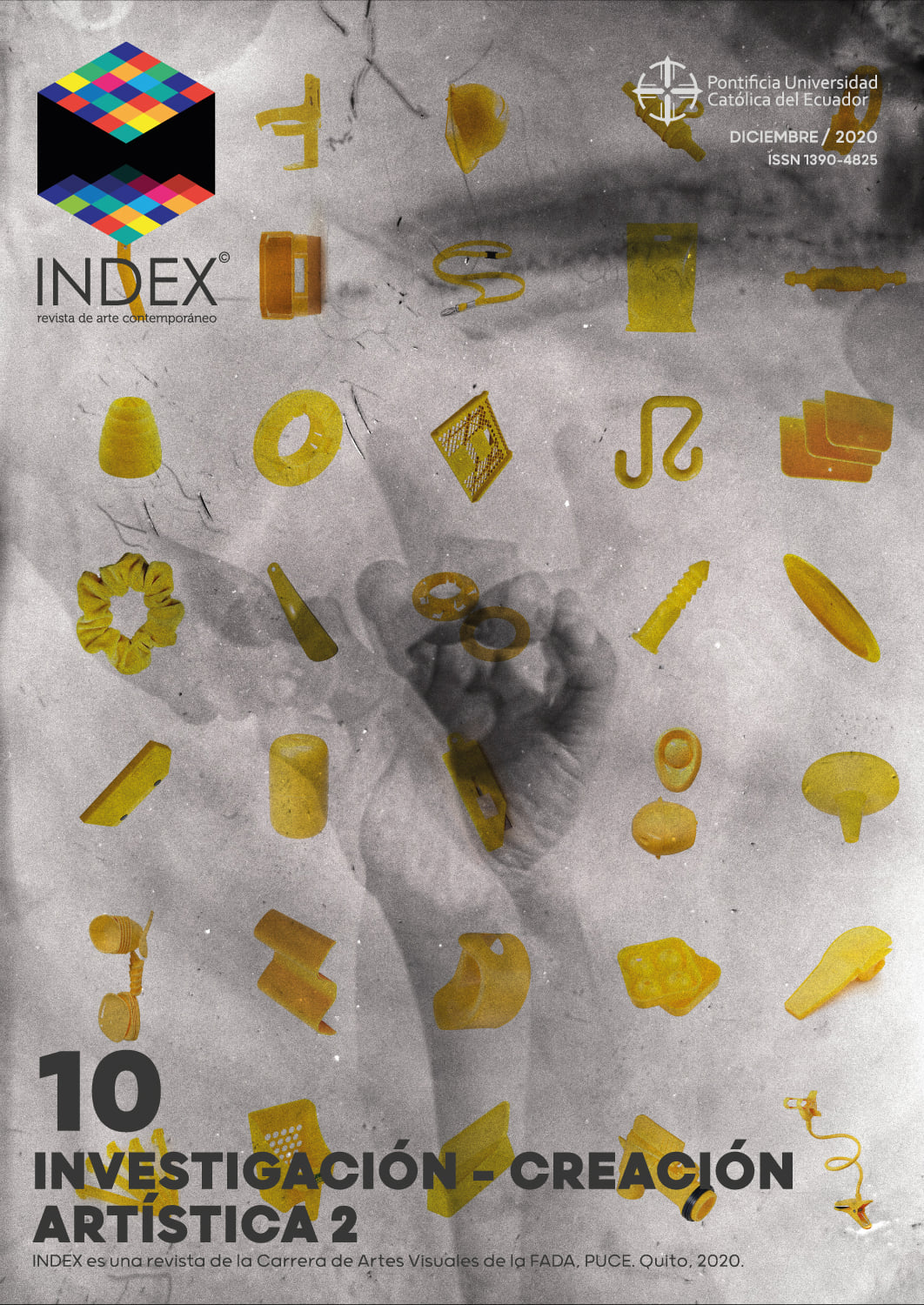Cultivated portraits (Microorganic and sympoietics) Visions of the body in the work of Luciana Paoletti.
Main Article Content
Abstract
This work addresses the series Retratos (2010-present) which the artist and biotechnologist Luciana Paoletti makes by cultivating microorganisms captured in the bodies of loved ones, following the program of "making visible the invisible". I analyze the deviations that the artist makes from both the scientific discipline and the concept of bioart. This paper shows the tensions that the series establishes with the modern tradition of portraiture. The question is, what kind of referential power do these images hold with respect to the "living model" represented? Through the concept of sypoietics contributed by Donna Haraway, the rupture that this artist makes with the human visual scale is analyzed. It is concluded that, far from a relationship of similarity with the body to which she describes she establishes a metonymic relationship, based on contact. The body is shown as the territory of a microbiological life to discover.
Downloads
Article Details
Index, revista de arte contemporáneo maneja sus derechos bajo licencia Creative Commons Reconocimiento-NoComercial 4.0. En ese sentido los envíos quedan sujetos a la decisión del autor.
References
Barthes, R. (1989). La cámara lúcida. Nota sobre la fotografía. Barcelona, España: Paidós.
Belting, H. (2010 [2002]). Escudo y retrato. Dos medios del cuerpo. En: Antropología de la imagen (pp. 109-142). Buenos Aires-Madrid, Argentina-España: Katz.
Benjamin, W. (1987). La obra de arte en la época de su reproductibilidad técnica y Pequeña historia de la fotografía. En: Discursos Interrumpidos, I (pp. 16-57 y 61-83). Madrid, España: Taurus.
Braidotti, R. (2015). Lo Posthunano. Barcelona, España: Gedisa.
Cortés-Rocca, P. (2004). Fantásmas en la máquina. Fotografías de espectros en el siglo XIX. In Si(s)tu, pp. 115 - 128
Freund, G. (1983). La fotografía como documento social. Barcelona, España: Editorial Gustavo Gili.
Haraway, D. (1991). Ciencia, cyborg y mujeres. La reinvención de la naturaleza. Valencia, España: Cátedra.
------(1999) Seguir con el problema. Generar parentesco en el Chthuluceno. Bilbao, España: Consonni.
Hauser, J. (2005). Bio Art. Taxonomy of an Etymological Monster. En: Schöpf, C. y Stocker, G. (eds.). Ars Electronica 2005. Hybrid–Living in Paradox. Viena, Austria: Ars Electronica.
------(2008). Observations On an Art of Growing Interest. Toward a Phenomenological Approach to Art Involving Biotechnology. En: Da Costa, B. y Philip, K. (eds.). Tactical Biopolitics. Art, Activism, and Technoscience (pp. 83-104). Cambridge, Londres: MIT Press.
Kozak, C. (comp.) (2014). Poéticas/políticas tecnológicas en Argentina (1920-2019). Paraná, Argentina: La hendija.
Latour, B. (2012). Nunca fuimos modernos. Ensayos de antropología simétrica. Buenos Aires, Argentina: Siglo Veintiuno Editores.
Le Breton, D. (2002 [1990]). Antropología del cuerpo y modernidad. Buenos Aires, Argentina: Nueva Visión.
------(2010). "La invención del rostro". En: Rostros: Ensayo de antropología. (pp. 21-50). Buenos aires, Argentina: Letra Viva.
López del Rincón, D. (2015). Bioarte. Arte y vida en la era biotecnología. Madrid, España: Akal.
Maturana, H. y Varela, F. (2003). De máquinas y seres vivos : autopoiesis, la organización de lo vivo. Buenos Aires, Argentina : Lumen.
Mitchell, R. (2010). Bioart. The vitality of Media. Seattle, United States: Washington University Press.
Nancy, J. L. (2006). El retrato autónomo. En: La mirada en el retrato (pp. 11-36). Buenos Aires, Argentina: Amorrortu.
Newhall, B. (2002). Historia De La Fotografia. Barcelona, España: Editorial Gustavo Gili.
Rodríguez, P. (2019). Las palabras en las cosas. Saber, poder y subjetivación entre algoritmos y biomoléculas. Buenos Aires, Argentina: Cactus.
Sibilia, P. (2013). El hombre postorgánico. Cuerpo, subjetividad y tecnologías digitales. Buenos Aires, Argentina: Fondo de cultura económica.
Sloterdijk, P. (2001). El hombre operable. Notas sobre el estado ético de la tecnología génica. Artefacto. Pensamientos sobre la Técnica, 4.

